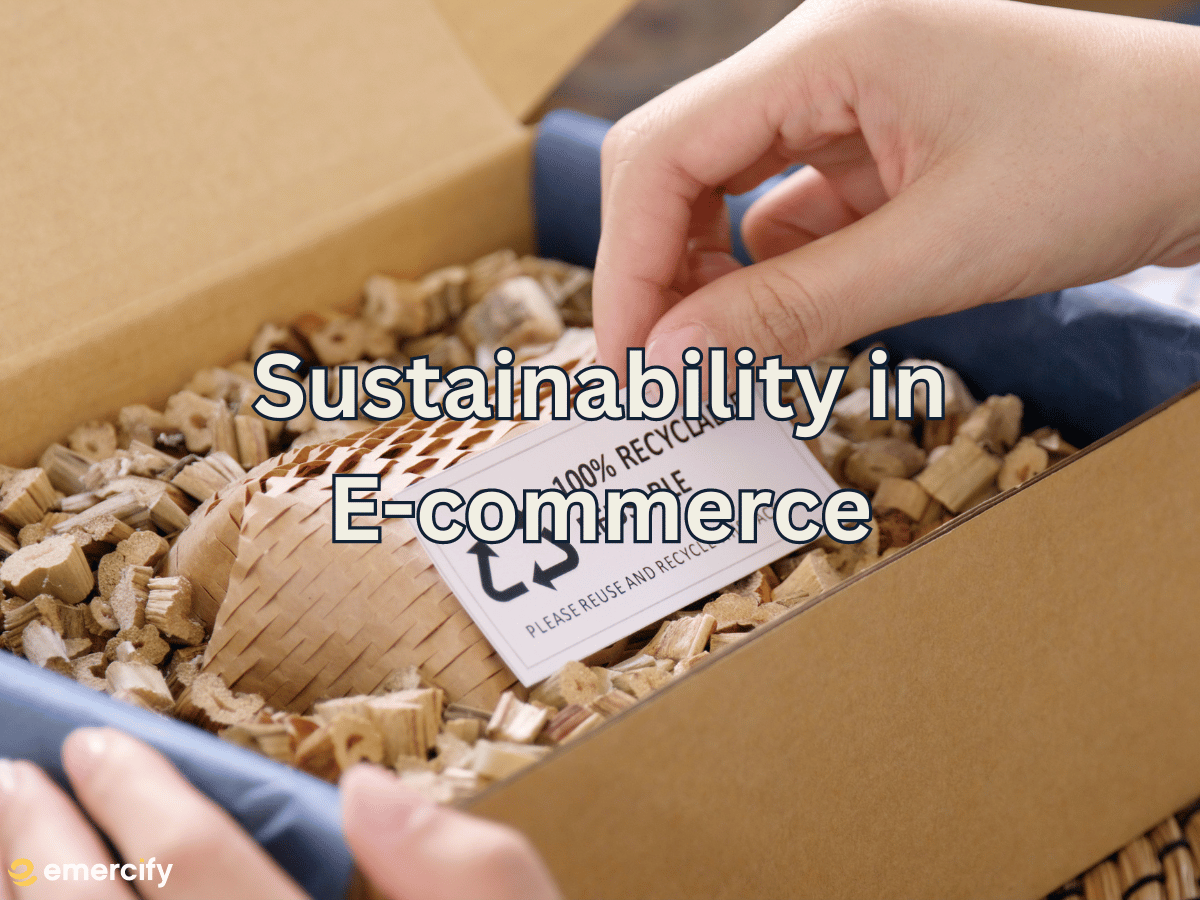Sustainability in E-commerce: Green Practices and Consumer Trends

In recent years, sustainability has become a key focus for consumers, businesses, and governments alike. In fact, one could argue that “going green” is considered the new norm. Due to growing concerns about climate change, resource depletion, and environmental degradation, many e-commerce brands are now finding ways to adopt sustainable practices to meet the expectations of their customers. This mindset shift is not simply a response to regulatory pressures or corporate accountability practices but a modernized competitive necessity driven by consumer preferences. Why is this becoming the norm in today’s consumers’ minds? Let’s dive in!
The Shift Towards Sustainability
Today’s consumers are more informed and conscious about the impact of their purchases. They actively look for products and brands that align with their values, including environmental impact and social responsibility. Consumers are willing to change their consumption habits to reduce their environmental impact, opting to buy products and services from companies whose values align with these very principles. This shift in consumer mindset is pushing e-commerce brands to rethink their business models and supply chains, encouraging brands to find ways to be sustainable and “green.”
Adopting of Sustainable Practices
Product Design and Packaging: E-commerce brands are rethinking product design to reduce waste and increase recyclability. This means brands are finding ways to design, package, and deliver their products in ways that reduce their environmental impact. This includes things like using eco-friendly packaging materials, such as recycled cardboard and biodegradable plastics, to minimize the carbon footprint. Many times, companies will provide a noted disclosure on their packaging that lets consumers know the materials and packaging are made of recycled materials. This helps companies communicate the change and adoption of sustainable packaging to consumers, thus helping build a stronger sense of honesty and transparency.
Supply Chain Transparency: Many e-commerce brands are increasingly being more transparent in their supply chains to ensure ethical sourcing and production practices. Brands are working hard to let their customers behind the curtain and see where items are being sourced and who the company is partnering with. This includes things like working closely with suppliers to monitor and improve labor conditions and reduce carbon emissions. This type of transparency is huge with consumers in today’s market.
Carbon Offsetting and Renewable Energy: To mitigate their carbon footprint, some e-commerce brands are investing in carbon offsetting programs and transitioning to renewable energy sources for their operations. Going green means working in harmony with nature, lessening your environmental footprint, and helping with conservancy efforts by adopting sustainable practices. This helps brands reduce their environmental impact while also appealing to eco-conscious consumers.
Circular Economy Initiatives: Some e-commerce brands are embracing the principles of the circular economy by promoting product reuse, recycling, and refurbishment. This not only reduces waste but also extends the lifecycle of products, contributing to a more sustainable consumption pattern. Adopting such an initiative helps significantly reduce the negative impact a brand would otherwise have on the environment that we traditionally see with single-use, one-time products. This also reduces production costs and helps lower the overall maintenance cost for consumers. Many brands consider this a win-win all around.
Sustainable Partnerships and Initiatives: Collaborating with like-minded organizations and participating in sustainability initiatives can help e-commerce brands amplify their impact. This could include joining industry-wide sustainability programs or supporting local environmental projects. An example of this is Dawn Dish Soap joining in the campaign to assist wildlife caught in oil spills. The company is not only able to showcase the “power of Dawn,” but it is able to do so by showing how it is able to assist in a crisis. This type of messaging and collaboration is a great way to boost a company’s eco-friendliness and sustainability.
The Role of Consumer Preferences
Consumer preferences and trends play a critical role in driving these sustainability initiatives. As more consumers prioritize sustainability when it comes to purchasing decisions, e-commerce brands are compelled to respond. Brands that fail to align with these changing preferences risk losing market share to competitors who are perceived as more sustainable and environmentally conscious. Consumer needs and wants dictate supply and demand. By not adapting to meet the changing trends of consumer behavior, a company fails to show it’s listening to what consumers want. And no one likes dealing with someone who won’t listen. If you plan to make your brand relevant, you need to ensure you are finding ways to stay relevant and show that you are listening to what consumers want.
The Business Case for Sustainability
Apart from meeting consumer expectations, adopting sustainable practices can also benefit e-commerce brands in other ways:
Cost Savings: Sustainable practices, such as energy efficiency and waste reduction, can lead to cost savings in the long run, improving the bottom line.
Brand Reputation: Building a reputation for sustainability can enhance brand image and loyalty, attracting environmentally conscious consumers.
Regulatory Compliance: Anticipating and complying with future regulations on sustainability can help e-commerce brands avoid potential fines and penalties.
Access to Markets: Some markets are increasingly requiring products to meet certain sustainability standards, making it necessary for brands to adapt to these requirements to access these markets.
Going Green is the Norm
The shift towards sustainability in e-commerce is not just a passing trend. It's a fundamental change driven by consumer behavior and market dynamics. E-commerce brands that embrace and integrate sustainability into their business strategies are not only meeting current consumer expectations but also future-proofing their businesses against environmental risks and regulatory challenges. The issue of environmental impact and change is not going away any time soon. Consumers nowadays are more environmentally aware and conscious, allowing this mindset shift to aid in their decision-making. As consumers continue to prioritize sustainability, e-commerce brands that fail to adapt may find themselves left behind in an increasingly competitive and environmentally conscious market. If you plan to stay in the top of your market, be sure to find ways to integrate sustainability in your business model.
Are you adopting sustainability practices? Why or why not?





